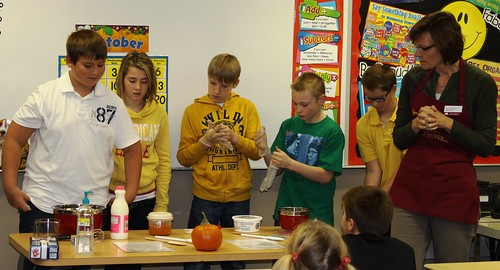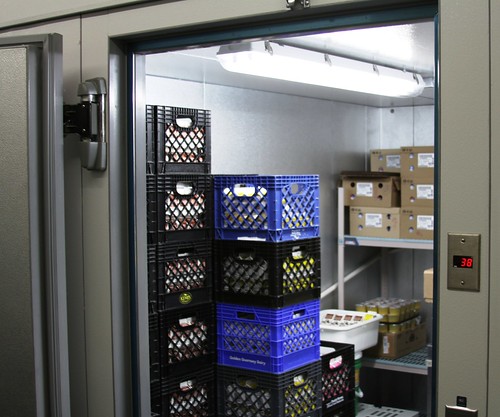
On a fall morning in Mrs. Jones’ sixth-grade class in Tracy, Minn., students are learning how to make pumpkin pudding.
Instead of using a can opener to pry the lid off cans of pumpkin, a real pumpkin is being used. And not just any real pumpkin, a pumpkin that came straight from a local garden and into the classroom.
The classroom isn’t the only place in Tracy Elementary where local foods are becoming more prevalent. The lunchroom also features more foods grown by local producers and served in school lunches.
Thanks in part to a $12,000 grant from USDA Rural Development, Tracy Elementary recently installed a walk-in freezer and cooler. The freezer and cooler allows the district to purchase more local produce to serve at school lunches, resulting in healthier students and new markets for local producers to sell their products.
After the pumpkin pudding was dished up, the students in Mrs. Jones’ class heard from Kerry and Kim Ruppert, local farmers that sell fruits and vegetables to the school. The Ruppert’s highlighted the work that goes into growing food and how eating more local fruits and vegetables builds stronger communities and a healthier population.
The freezer and cooler also mean that students are able to eat more of the food they grow themselves. The Tracy chapter of the National FFA Organization (formerly Future Farmers of America) recently started a community garden and, thanks to the new freezer and cooler, will be serving more fruits and vegetables grown by students next school year.
All of these actions to eat healthier and improve the local economy didn’t just happen by themselves. Led by Laurie Maeyaert, food services director at Tracy Public School, the district developed partnerships and launched initiatives to secure funding and educate people about the benefits of serving more local foods in school.
“We’re appreciative of the funding support from USDA and other organizations,” Maeyaert said. “We’re seeing some real positive changes taking place.”

Maeyaert worked with Megan Gernentz out of Rural Development’s area office in Marshall, Minn. The funding was delivered through the Community Facilities program, which funds essential buildings, vehicles and equipment in rural communities of 20,000 people or fewer.
For the students in Mrs. Jones’ class, the pumpkin pudding was a success. The same can be said so far of the Tracy district’s efforts to serve more local foods in its schools.
To find out more about USDA Rural Development’s Community Facilities program click here. USDA recently awarded grants to increase local foods in eligible schools, including 68 projects supporting nearly 2 million students. Read more here.
